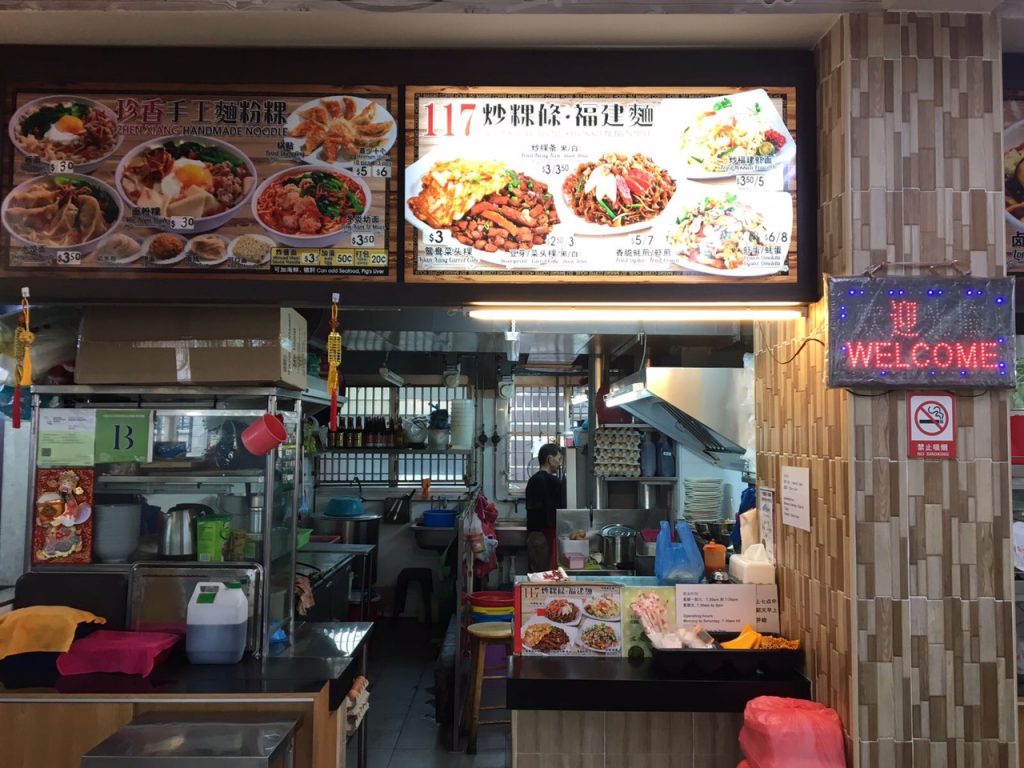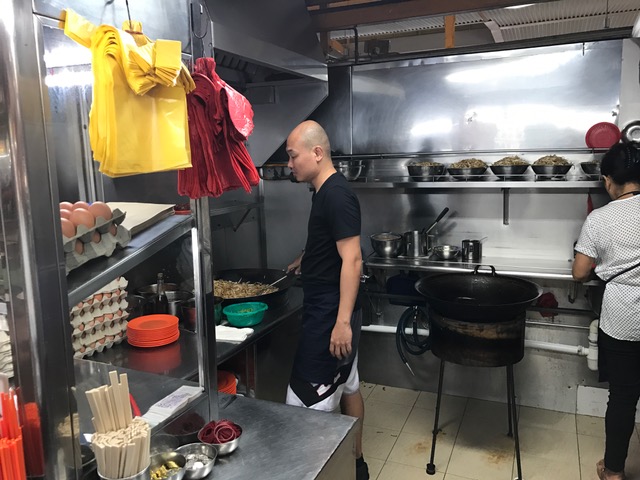From government subsidies to social enterprises to price hikes, commentators have proposed systemic changes in a bid to preserve our hawker heritage. But despite what has been said, the issue is really not one of economics or government policy.
At its core, it’s about perception.
As Singaporeans, our perception of hawker value is tied to the things that we are used to. Things that are immediately apparent such as ingredients and market rate.
For example, when we look at a bowl of big prawn noodles, we feel that it’s okay to pay between S$6 to S$10 for it because big tiger prawns are expensive. Similarly, Western Food Stalls can charge above S$6 for Chicken Chop because Western Food is “more expensive”. The same goes for Japanese food at hawker centres.
We don’t ask questions as long as its priced within the “market rate”, and this is problematic because it ignores one important factor: professional expertise.
Unlike the cost of ingredients, professional hawker ability is difficult to quantify. This is especially so in the case of Char Kway Teow.
despite its popularity, Kiat tells me that it’s very difficult for him to raise prices
However, despite its cheap ingredients, it takes a substantial amount of skill to fry a plate of Char Kway Teow. And unfortunately, we rarely account for this when we consider its market price.
Ask any good Char Kway Teow chef and you will be told that learning how to control a wok fire is more art than science. Some hawkers, such as Kiat, the man behind the famous Hill Street Char Kway Teow, have spent years perfecting his craft.
“This skill can’t be taught, you just need to go and practice,” Kiat explains. Many people in Singapore would consider Hill Street Char Kway Teow to be one of, if not the best, in town. Kiat’s father, a hawker legend, has since retired and passed the baton on to him.
“I’ve been frying Char Kway Teow for about 3 years. My Father had been doing it for over 50 years until retired,” he continues.
Each plate of Hill Street Char Kway Teow is thus the result of over 50 years of cumulative expertise. Yet, none of this expertise is accounted for in the selling price of S$3.50/S$4 a plate.

“A couple of years ago, when we raised the price of a regular sized plate from S$3 to S$3.50, a lot of our regulars told us that it was too expensive, and that they will not be placing any more orders,” he says. Prior to the price hike, Kiat and his father have maintained a S$3 pricing for more than 10 years.
To me, a price hike of S$0.50 seems reasonable considering that they have been grinding it out for so many years, serving the same consistently delicious plate of noodles.
But then again, I belong to a generation who thinks nothing of paying S$5 for a cup of gourmet coffee. And as Kiat explains, “it’s usually the older folk that complain about the increased prices.”
This is not surprising. On one end, we have a camp that thinks that hawker food has to remain cheap because it’s what they have been used to for so long. On the other, we have millennials who have been exposed to global food movements and can appreciate the artisanal ability behind each plate.
This represents a fundamental gap in perception and is the reason why businesses as popular as Hill Street Char Kway Teow have difficulty convincing its regulars to accept a S$0.50 price hike.
This gap in perception is made even more apparent when we compare Hill Street Char Kway Teow, with an “average” Char Kway Teow hawker.

At S$3 a plate, her Char Kway Teow is only slightly cheaper than Hill Street’s. Yet, the stalls couldn’t be more different.
For one, while I’m not saying that Madam Wang’s Char Kway Teow tastes bad, there’s just no way it is in the same league, tastewise, as Hill Street. Reputation wise at least, there’s no comparison.
Second, there’s a huge gap in experience. Madam Wang has only been frying Char Kway Teow for 10 years, whereas Hill Street has been in business for over 50 years. Shouldn’t this count for something?
Finally, the pricing barely accounts for specialisation – Madam Wang operates a general fry-up stall and Char Kway Teow is a part of her offerings. Whereas for Kiat, it’s the only thing that him and his family have been selling for more than five decades.
Is S$0.50 enough to account for all these differences? I’ll leave that to you to decide.
But when a great plate of Char Kway Teow, and an average plate of Char Kway Teow costs more or less the same price, then there’s clearly a problem with how we perceive hawker value.
is eating good food a privilege or an entitlement?
We’re not talking about the survival of one stall, we’re talking about the survival of the dish itself. And where Char Kway Teow is concerned, perceived value is everything. This is because, from a business perspective, Char Kway Teow does not have a lot going for it.
Just imagine if you’re considering a career selling Char Kway Teow.
The things that will become immediately apparent are that first, there’s a hard cap on how many plates of Char Kway Teow that you can sell. Kiat, for example, sells on average 200 plates per day, and it has been capped at this amount for years.
If this is the pinnacle of success, after 50 years of hard work and prices are still capped at S$3.50, would this be worth your time?
Second, you probably won’t have the luxury of the subsidised rental rate which was given to the first – generation hawkers. Can you really make ends meet selling S$3 – S$4 plates of Char Kway Teow?
Probably not the most attractive career option.

But in order for this to happen, we need to re-think how we value this dish. Or put in another way, we must allow it to transcend hawker food altogether.
At the very least, we should be willing to pay restaurant prices for Char Kway Teow that is truly transcendent – Hill Street, Outram Park, Hai Kee, just to name a few. If we can pay S$10 for Ramen, why not Char Kway Teow, right?
Of course, this would mean that good Char Kway Teow would no longer be the dish for the masses. It would be a treat for the privileged, reserved for those who can afford it.
But at this point, we then need to ask ourselves, is eating good food a privilege or an entitlement? Do we deserve to eat good food? Can we imagine a Singapore without Char Kway Teow?
Perhaps this is just a first-world problem, a middle-class affliction.
But if you really care about hawker heritage, then it’s worth considering this perspective. Our hawkers are here to make a living, and the responsibility of feeding the masses shouldn’t rest on their shoulders.
If we need to make Char Kway Teow more atas to ensure its survival, then so be it!








